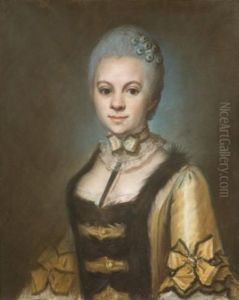Charles-Marie Caffieri Paintings
Charles-Marie Caffieri, born in 1636 and deceased in 1712, was a prominent figure in French sculpture during the 17th and early 18th centuries, a period that saw the flourishing of Baroque art in Europe. Although not as widely recognized as some of his contemporaries, Caffieri played a significant role in the development of French sculpture, contributing to the ornate and dynamic qualities that define the Baroque style. His works, characterized by their emotional intensity and intricate details, reflect the period's emphasis on movement and complexity.
Caffieri hailed from a renowned family of Italian artists who had settled in France, contributing to the artistic scene there. This background provided him with an environment rich in artistic tradition and innovation, allowing him to train and work within a vibrant community of artists. Throughout his career, Charles-Marie Caffieri was involved in numerous projects for the French court and the Catholic Church, creating sculptures that adorned palaces, churches, and public spaces. His ability to blend the grandeur of Italian Baroque with a distinctly French sensibility made his works highly sought after.
Despite the high regard in which he was held during his lifetime, Caffieri's legacy has been somewhat overshadowed by other artists of his time, such as Gian Lorenzo Bernini and François Girardon. However, recent scholarship has begun to re-evaluate his contributions, highlighting his role in the evolution of French sculpture and his influence on subsequent generations of artists. Caffieri's work remains an important testament to the artistic achievements of the Baroque period, demonstrating the rich interplay between Italian influence and French artistic innovation.
